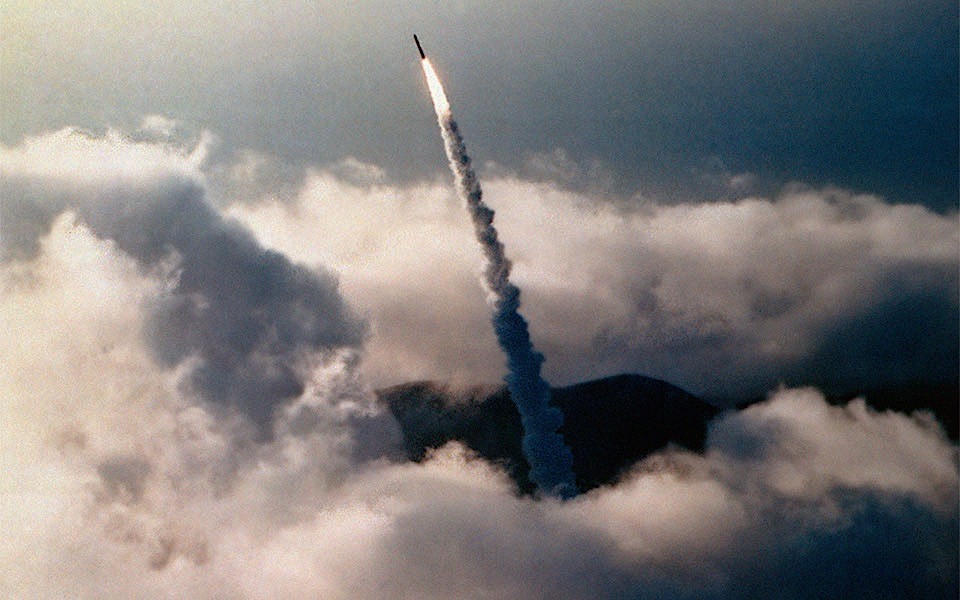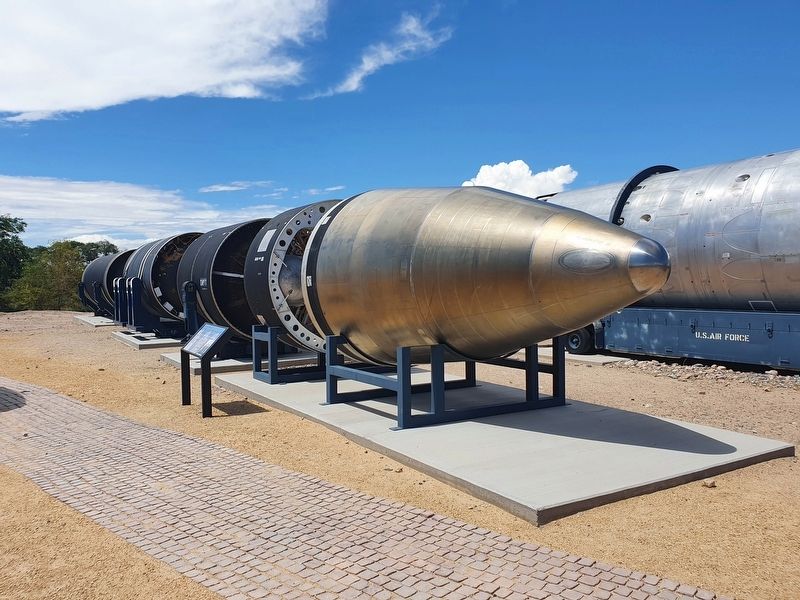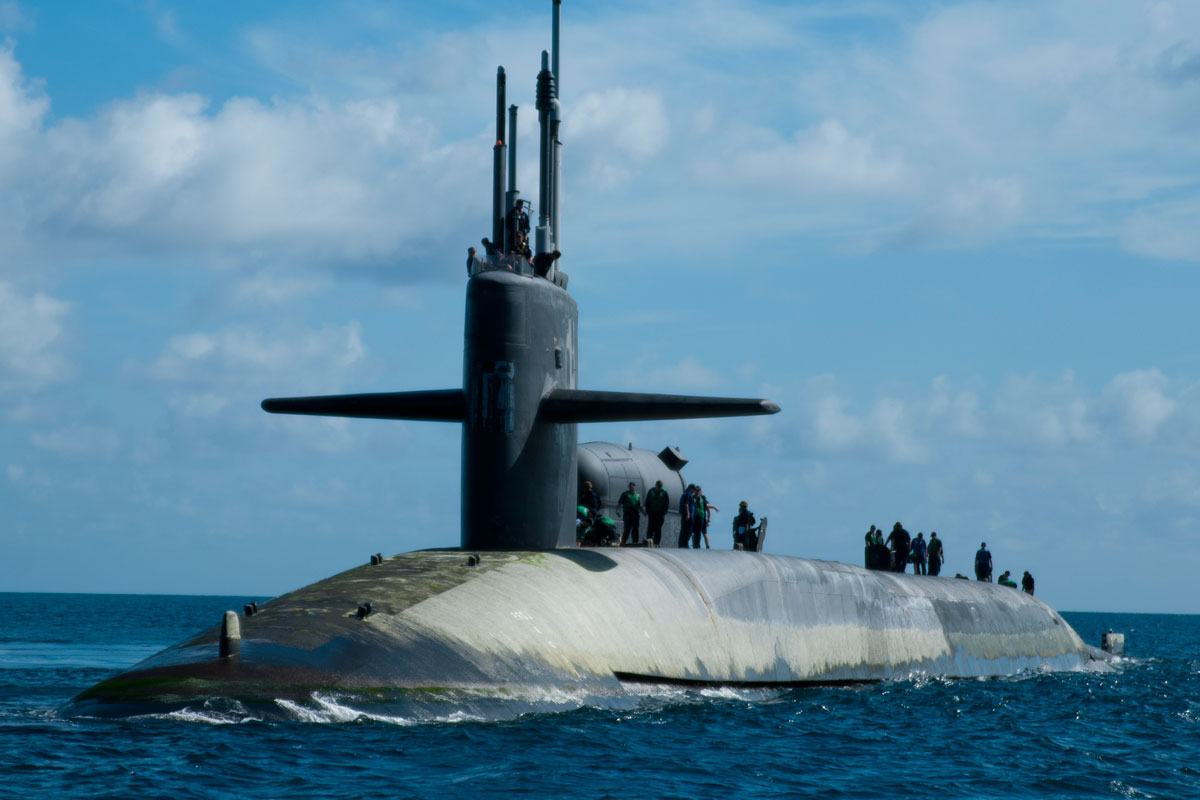
US and Russian ICBMs are currently loaded with just one warhead.
STRATCOM Suggests a Return To ICBMs
Armed With Multiple Warheads
Joseph Trevithick / The War Zone
(February 29, 2024) — The head of the US Strategic Command has called for “serious consideration” of a return to deploying intercontinental ballistic missiles, or ICBMs, with multiple nuclear warheads. The US Air Force’s LGM-30G Minuteman III ICBMs have this capability, but operational examples are presently only loaded with one warhead due to arms control agreements with Russia. The plan has been that the service’s future LGM-35A Sentinel ICBMs will also only have a single warhead for the same reasons.
US Strategic Command (STRATCOM) boss Air Force Gen. Anthony Cotton highlighted the importance of looking into returning to deploying ICBMs with more than one warhead, also known as a multiple independently targetable reentry vehicle (MIRV) configuration, while testifying before members of the Senate earlier today. STRATCOM oversees the US military’s triad of nuclear deterrent forces, which include silo-based ICBMs, nuclear-capable bombers, and nuclear ballistic missile submarines.

An unarmed LGM-30G Minuteman III ICBM in routine testing.
“I do believe that we need to take serious consideration in seeing what uploading and re-MIRVing the ICBM looks like, and what does it take to potentially do that,” Cotton told the assembled members of the Senate Armed Services Committee.
Cotton was responding to a question about which of the 81 recommendations in a report from the Congressional Commission on the Strategic Posture of the United States that was published last year he felt deserved prioritization. The STRATCOM head also pointed to that report’s discussion about the need for more planning for integrated strategic-level nuclear-conventional operations as being of particular note, especially in the Pacific and Europe.
The Strategic Posture Commission’s specific recommendation regarding MIRVing is to “plan to deploy the Sentinel ICBM in a MIRVed configuration.”
The Air Force has previously disclosed that the Sentinel ICBM design allows for a MIRV configuration, should a decision be made to deploy the missiles in this way.

A rendering of the future LGM-35A Sentinel ICBM. Northrop Grumman
However, the present plan is that each LGM-35A ICBM will be loaded with a single W87-1 nuclear warhead inside a Mk 21A re-entry vehicle when they enter service, which is expected to start in the 2030s. It is unclear what the W87-1’s exact yield is, but the original W87 warhead has a reported baseline yield of 300 kilotons. W87’s second stage is understood to be modifiable to increase the weapon’s yield to 475 kilotons.
This is in line with the current configuration of the 400 LGM-30G Minuteman IIIs that the US Air Force has deployed now and that the Sentinels are set to replace on a one-for-one basis. Each LGM-30G either has one W87 warhead in a Mk 21 re-entry vehicle or a single W78 in a Mk 12A re-entry vehicle. The older W78 has a reported yield of around 335 kilotons.
When the Minuteman III first entered service in 1970 it had a MIRV configuration with three W62 warheads. Those were subsequently replaced by the W78s. The Air Force’s LGM-118A Peacekeeper ICBM, which was first operationally deployed in 1986, was also a MIRV type capable of carrying up to 11 W87s.

A decommissioned Peacekeeper ICBM on display at the USAF Museum.
Successive US-Russian arms control agreements led to the LGM-118As being removed from service in 2005 and the total number of warheads in each of the remaining LGM-30Gs being reduced to one. The W87s now used on Minuteman IIIs also came from decommissioned Peacekeepers.
The US Air Force has fired MIRVed Minuteman IIIs without live nuclear warheads as part of routine testing in recent years, demonstrating that those missiles retain that capability.
A MIRV configuration not only increases the total number of targets that a single missile can strike, but also complicates things for enemy defenders by increasing the volume of threats they have to contend with. Modern ICBMs typically carry decoys (also known as penetration aids) and have other countermeasures to make detection, discrimination, and any attempted intercepts of the missile and/or the re-entry vehicles it releases even more complex.
The US Air Force video below gives a good general look at how a MIRVed ICBM, loaded with a mixture of warheads and penetration aids, functions.
It is worth noting that the Trident D5 submarine-launched ballistic missiles carried by the US Navy’s Ohio class ballistic missiles submarines, or SSBNs, have MIRV configurations. The Navy’s future Columbia class SSBNs are also set to be armed with improved variants of the D5.

The Ohio class SSBN USS Rhode Island can fire Trident D5 missiles.
Russia and China, America’s current main nuclear competitors, also both field road-mobile and silo-based ICBMs with MIRV configurations.
The main limiting factor currently to the US military returning to using MIRVed ICBMs is the New START treaty, which imposes limits on how many total strategic warheads, as well as delivery platforms, the United States and Russia can have deployed at any one time. The treaty defines each re-entry vehicle on an ICBM or SLBM, as well as individual nuclear-capable heavy bombers, as counting as a single “warhead.” You can read more about the agreement’s provisions in this previous article.
So, under New START, in order to deploy MIRVed Sentinels, or even re-MIRV existing Minuteman IIIs, the US military would have to make “warhead” trades elsewhere across its nuclear triad. There are certainly potential ways that this could be done more readily, such as down-loading Trident D5s or fielding a smaller number of uploaded LGM-35As to replace the Minuteman IIIs.
By the time the first LGM-35A actually arrives, this could well be moot. The Sentinel program is currently experiencing significant cost increases and schedule delays, which could push back the deployment date for the new ICBMs, as you can read more about here.
New START will sunset in 2026 and there is no guarantee in the current geopolitical climate that a new similar treaty will be successfully negotiated with Russia to take its place. The Russian government already suspended its participation in New STARTlast year in retaliation for the US government’s continued support for Ukraine. Separate US efforts to bring China into a new trilateral nuclear arms control arrangement along with the Russians have so far yielded no real results.
“Would I love to see China step up and want to have a negotiation with us, would I love to see Russia come back? Absolutely,” STRATCOM’s Gen. Cotton said at the hearing today. “But I’m also a realist who understands that that may or may not happen. So as a combatant commander, my job is to understand how do I build a force that I could present to the President if that doesn’t happen.”
Altogether, when and if the US military returns to fielding ICBMs with multiple warheads, and how that might be done, remains to be seen. Still, the comments today from STRATCOM’s Gen. Cotton, which support the Congressional Strategic Posture Commission’s recommendations on the matter, point to clear renewed US interest in MIRVed ICBMs.
Posted in accordance with Title 17, Section 107, US Code, for noncommercial, educational purposes.